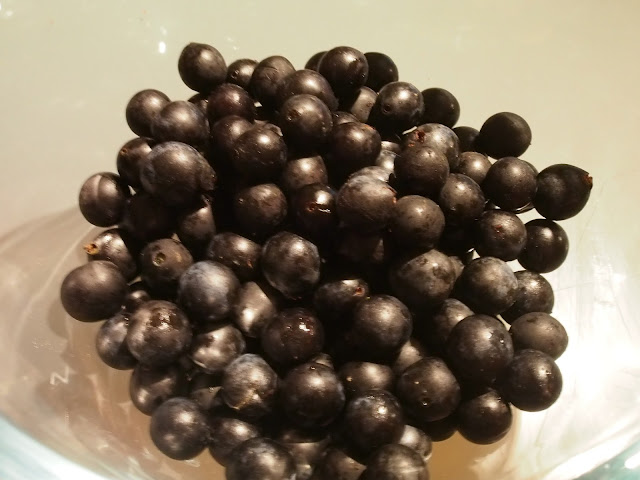After two and a half years in the pickling wilderness/cucumber patch, the Jarhead blog is back.
In the time since my last post, a lot has happened. I left Sydney, moved to the UK and then moved back to Sydney again. In between, I pickled and preserved some amazing British and European ingredients, and I'll be posting some of these recipes retrospectively (possibly trying to recreate them here in Australia).
One of the best things I made while I was away was sloe gin. Sloe gin gets its name from the fruit of the prunus spinosa, otherwise known as the 'Blackthorn' plant (and not because it should be consumed slowly, nor because it's time consuming to make...but it does take a while).
I think sloes are quintessentially British. They grow wild throughout the UK, in hedgerows and in the forest. Sloes can't be eaten straight off the plant - they're tart and tannic.
Because I lived in the middle of the bustling London metropolis, Blackthorn bushes were not exactly plentiful in my area. They're not something you can buy from the major UK supermarkets either (or at least I didn't manage to find any).
When you can't get your hands on fresh sloes, it helps to have a friend with a secret stash. One of my work colleagues was visiting his family Winchester one weekend and managed to gather a sizeable haul of sloes, which he brought back to London for me. He said that he found them while hiking in the New Forest, but I assume this was code for, "I found these sloes on my sprawling country estate while wearing tweed and hunting for pheasants".
I received some good tips on making sloe gin from a tour of the Sipsmith distillery in Chiswick. The tour was run by the head distiller. While showing us their impressive copper stills, they described the process for making their sloe gin. They mentioned that it's actually a myth that you need to use a pin to prick each sloe berry before soaking the berries in gin to extract the flavour. They claimed that the best method is to freeze the sloes. This breaks the tough skins of the sloes so that when they are added to the gin and begin to defrost, all of the flavour and colour permeates through gin. Sugar is then added afterwards to taste. Sipsmith have conveniently posted some of these tips on their website.
As far as I'm aware, sloes are difficult to find in Australia as they are native to the Northern hemisphere. A good alternative for making flavoured gin would be damsons (which are small plums). You can use the same process.
Sloe Gin Recipe
Ingredients
- A 2 litre jar.
- 1.5 litres of good quality London dry gin. I used Southbank London Dry Gin.
- Enough sloes to fill up half of the jar.
- White sugar.
Method
- Wash the sloes and cut or pull off any remaining stalks.
- Place sloes in a plastic bag and place in freezer overnight.
- Place the frozen sloes into the jar, and then fill the jar up with your gin.
- Leave to macerate and infuse for at least three months, occasionally agitating the jar.
- After three months, strain the mixture and discard the sloes.
- Make a simple sugar syrup (1 part sugar to 1 part water).
- Add the sugar syrup to the strained sloe gin to taste.
- Place in old gin bottles for storage.
Sloe gin is sweet in comparison to regular gin or spirits. So I prefer to mix it with soda water (instead of tonic) and to add a squeeze of lime.









No comments:
Post a Comment